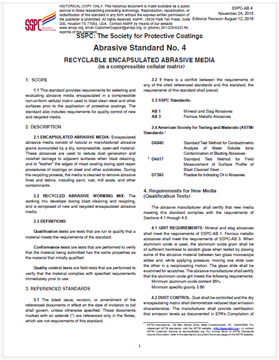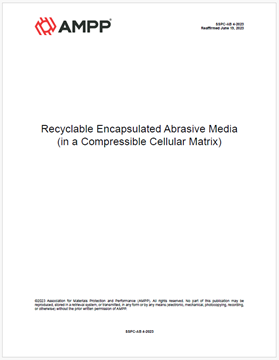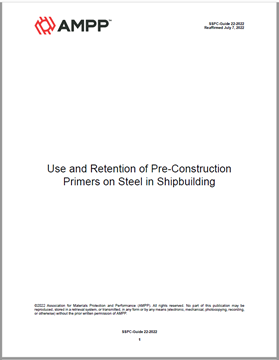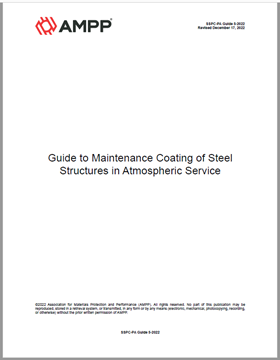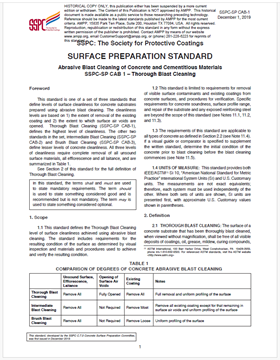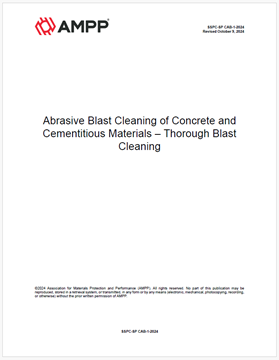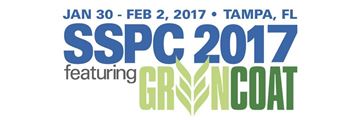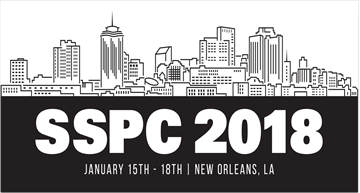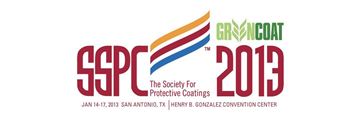Search
Military
View as
Sort by
Display
per page
SSPC-AB 4-2016, Recyclable Encapsulated Abrasive Media (in a compressible cellular matrix)
Product Number:
SSPC-AB 4-2016
Publication Date:
2016
$179.00
SSPC-AB 4-2023, Recyclable Encapsulated Abrasive Media (in a Compressible Cellular Matrix)
Product Number:
SSPC-AB 4-2023
Publication Date:
2023
$109.00
SSPC-Guide 22-2022, Use and Retention of Pre-Construction Primers on Steel In Shipbuilding
Product Number:
SSPC-Guide 22-2022
Publication Date:
2022
$109.00
SSPC-PA Guide 5-2022, Guide to Maintenance Coating of Steel Structures in Atmospheric Service
Product Number:
SSPC-PA Guide 5-2022
Publication Date:
2022
$109.00
SSPC-SP CAB-1-2019, Abrasive Blast Cleaning of Concrete and Cementitious Materials – Thorough Blast Cleaning
Product Number:
SSPC-SP CAB-1-2019
Publication Date:
2019
$179.00
SSPC-SP CAB-1-2024, Abrasive Blast Cleaning of Concrete and Cementitious Materials – Thorough Blast Cleaning
Product Number:
SSPC-SP CAB-1-2024
Publication Date:
2024
$109.00
Status of High Temperature Resistant Thermal Spray Nonskid Coatings Within the U.S. Navy
Product Number:
51217-079-SG
Publication Date:
2017
$20.00
The Development of Electronic Data Gathering for the US Navy Robust Functional Paperless Paint Project (RFPP)
Product Number:
41214-809-SG
Publication Date:
2014
$20.00
The Greatest Challenge in Corrosion Prevention and Control is Apathy
Product Number:
41216-971-SG
Publication Date:
2016
$20.00
THE IMPACT OF COATING SYSTEMS ON THE TECHNOLOGY REQUIRED TO SUSTAIN US AIR FORCE SYSTEMS DoD
Product Number:
51218-151-SG
Publication Date:
2018
$20.00
The Impact: Traveling Faster Than the Speed of Sound, Protective Coatings at Work
Product Number:
41216-997-SG
Publication Date:
2016
$20.00
The United States Marine Corps (USMC) Corrosion Prevention and Control (CPAC) Program
Product Number:
41213-780-SG
Publication Date:
2013
$20.00

